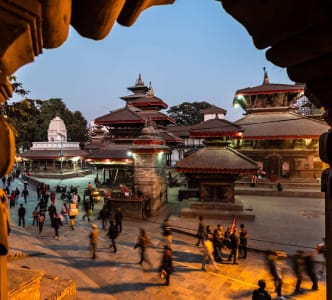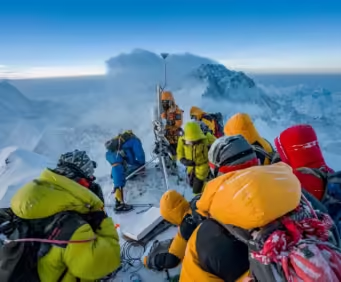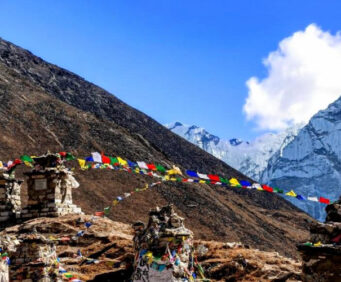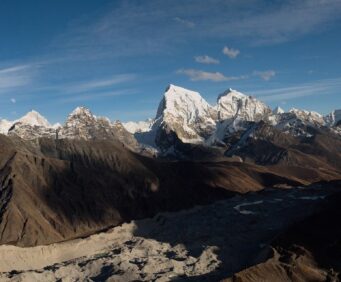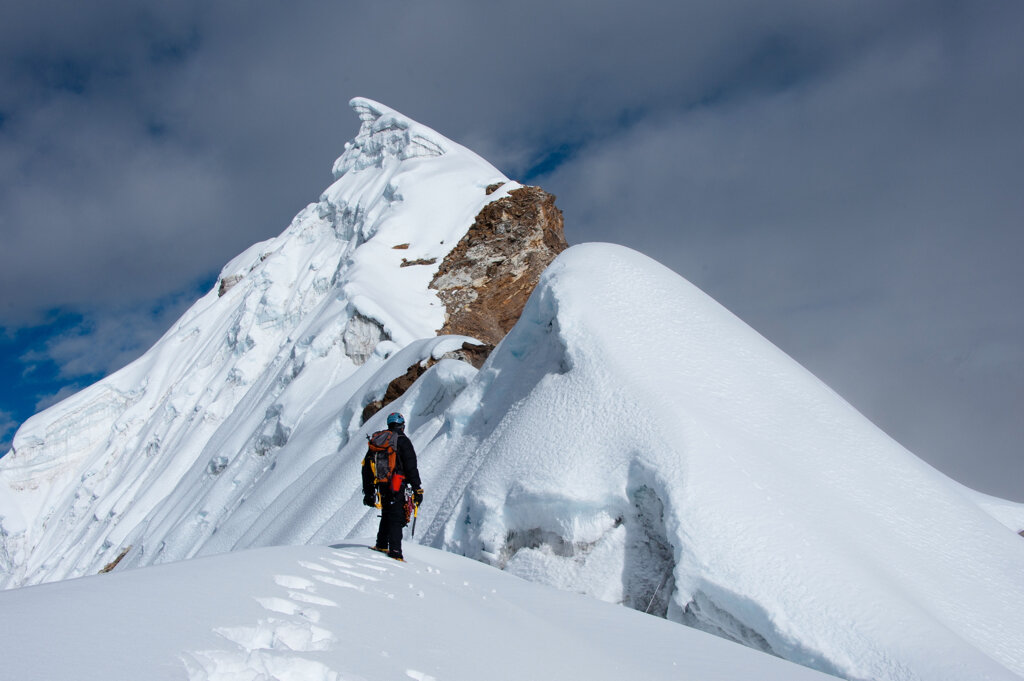
Best Seasons to Climb Island Peak
19th May, 2024 - Posted By: Himalayan AbodeMountains are a symbol of Nepal. Which has mountains covering 75% of its land, is a climbing paradise for beginners and experts. If you have an intense interest in mountaineering, Nepal is a place you should explore. Among the most climbed summits in Nepal is Island Peak, a 6,000-meter mountain near Mount Everest. Spring (March, April, and May) or fall (September, October, and November) are the Best seasons to climb Island Peak.
These seasons provide beautiful views of the mountains because the weather is steady and the skies are clear.
Where is Island Peak?
Island Peak, sometimes called Imja Tse locally, is located in eastern Nepal’s Solukhumbu, or Everest Region. At 6189 meters, Island Summit is the closest summit to Lhotse, Mount Everest, and other 8000 and 7000 meter peaks. The location coordinates 86° 56’E longitude and 27° 55’N latitude. According to the Nepal Mountaineering Association, Island Peak is a “trekking peak in Nepal.”
How To Reach Island Peak?
There are two ways to reach the Island Peak trail: on foot or by plane. The mountain is not accessible by motorized road. You may take a plane from Kathmandu to Lukla or trek there from Jiri or Salleri.
Following the well-known Everest Trek route, you climb from Lukla to Chukkung. Alternatively, you might choose to detour to Everest Base Camp and Kala Patthar before continuing on to Chukkung via Lobuche.
Chukkung is only approximately six kilometers away from the Island Peak Base Camp. From base camp, you bid on the top. Reaching Island Peak and returning to base camp or Chukkung can be completed in a day or two if you choose to camp at high camp.
How long is Island Peak Climbing?
You can climb the peak in a single day after you arrive at the Island Peak Base Camp. You can choose to camp at High Camp if you feel that climbing it in one day will be too tiresome. Because it only takes a little while to reach the summit and return safely to base camp, Island Peak is a popular choice among climbers.
You have to walk eight or ten days from Lukla to the Island Peak Base Camp. It is possible to ascend the peak and return to base camp on the same day. You are not required to spend a lot of time on the mountain.
How do you plan Island Peak Climbing?
The best seasons to climb island peak in the spring and fall. However, these are the busiest times of year for tourists. Climbing in the early winter can be a great way to get away from the people and test your bravery and whether you can withstand the bitter cold. Island Peak is best climbed in the spring and autumn.
Island Peak Climbing in Spring
It can get warmer and get more sunlight during the day at the lower reaches. But temperatures below freezing and snowfall are to be expected above 4000 meters. Temperatures during the day range from 10 to 17 degrees Celsius on average.
The temperature drops below zero at night. From Dingboche or Lobuche on, it can grow colder. The weather is still steady, with just the occasional downpour and fog bringing in much precipitation.
Island Peak Climbing in Autumn
The ideal time of year to climb Island Peak is said to be in the fall. Warm, pleasant weather, a lack of clouds, unobstructed views of the mountains, and little precipitation are characteristics of this season. During this season, the average temperature varies between 7 and 15 degrees Celsius. The drawback is that a lot of people opt to visit the mountains during this time of year, which means that routes are congested and lodging is hard to come by.
Island Peak Climbing in Monsson
It is not recommended to climb during the summer or monsoon season because to heavy rainfall, thunderstorms, and fog. The hiking path gets muddy and swarms with leeches.
Sections of the trail are occasionally washed away by intense downpours. In addition, mist and clouds obstruct visibility and make it dangerous to stroll around the outdoors.
Island Peak Climbing in Winter
Since winter is the harshest season in the Nepal Himalayas, most hikers and climbers would rather avoid the mountains at this time of year. But these days, early winter travel is preferred by travelers because there are fewer “peak season crowds” and flights and lodging are more easily found. Being alone on a mountainside with no one else around sounds more seductive than anything else.
Winter climbing Island Peak can be difficult because of ice and snow accumulation as well as harsh weather. However, it’s not unfeasible. If one is prepared both physically and mentally, one can ascend the mountain. Additionally, having the right tools and equipment is essential.
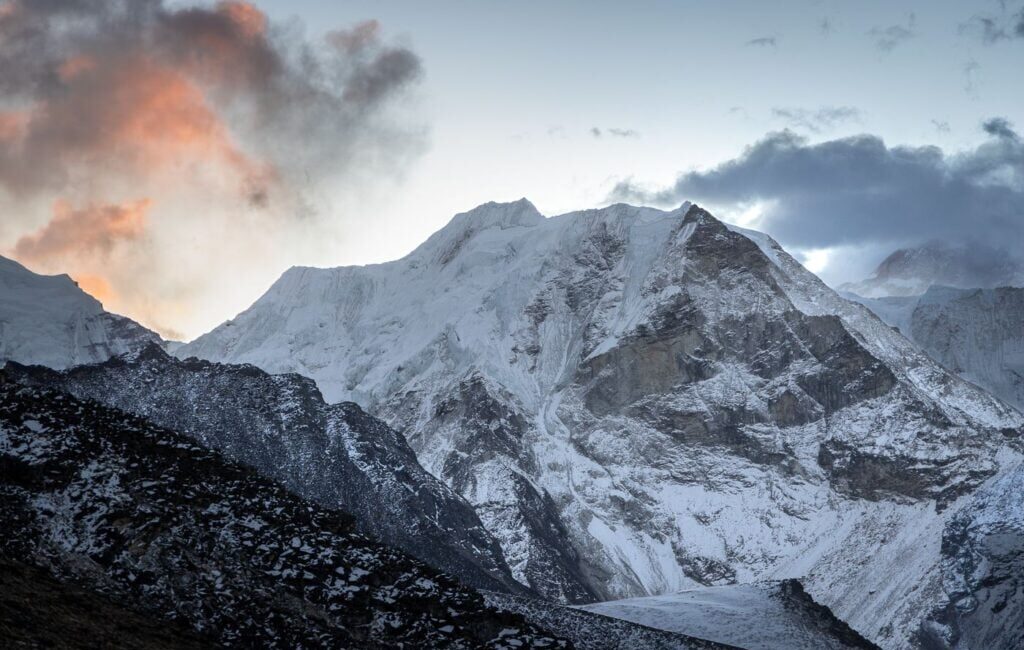
The Difficulty of Island Peak Climbing
One of the more manageable 6000-meter peaks in the Nepal Himalayas to climb is Island Peak. The route is easy and non-technical, except for the final portion that leads to the top. Having said that, one should be aware of the route’s severe climb and exposure. The descent is challenging due to the drop in oxygen levels and the cold.
With a difficulty level of PD+ on the French Alpine Grade scale, Island Peak is a great peak to start climbing for inexperienced climbers. There are some tough parts of the course, but nothing too difficult for a beginner to handle.
Depending on the prevailing weather conditions there may or may not be crevasses en route. If you come across one, you use a ladder (fixed by the sherpas) to cross it.
Island Peak is chosen for an acclimatization climb by seasoned mountaineers. Mount Everest expedition groups usually scale this mountain to acclimatize and practice their skills before ascending the eight-thousander.
Island Peak Climbing Cost
The price varies based on the kind of services you want to use while traveling. When making a reservation through an outfitter, the price often covers the services of a porter, food, teahouse lodging, airline tickets to Lukla, and guides for trekking and climbing. Depending on the kind of lodging (luxury or regular teahouse) you select for the walk, you might have to spend more or less.
Trekking alone can result in huge cost savings. However, we advise you to use the local porters and guides if you want to help out the economy.
Permit For Island Peak Climbing
A peak climbing permission from the Nepal Mountaineering Association is required to ascend Island Peak. The season affects how much the permit costs. It can be more expensive to obtain a climbing permit in the spring or fall than in the winter or summer. To reach the road to Island Peak Base Camp, you also need entry permits for Khumbu Pasang Lhamu Rural Municipality and Sagarmatha National Park.
Tips to make travel successful
There are a few things you may do to ease your ascent if you’re thinking about climbing Island Peak. The following are some pointers and methods to help your Island Peak Climb go more smoothly:
Be in Good Shape:
Climbing Island Peak will need a tremendous deal of physical stamina, endurance, and energy. Due to the mountain’s difficulty, you must first get physically ready. Exercises like hiking and cardiovascular fitness training will help you improve that.
Obtain the Correct Equipment:
You will have a stress-free ascent if you have the appropriate equipment. Purchasing high-quality, cozy, and environment-appropriate products is a wise investment. Make sure you have the necessary climbing gear on you as well.
Climb in a group or a partner:
Climbing in a group or with a partner is always safe because it’s always safer to have companions in case of emergency. As this blog post explained, you can hire porters or a guide to assist you in climbing Island Peak.
Acclimatize and Stay Hydrated:
It’s always necessary to acclimatize during your mountain climbing expedition. Take a break from your journey, and drink plenty of water to keep yourself hydrated.
Follow The Guidelines
Always follow the climbing guidelines during your expedition. Remember always to be aware of the climbing risks and follow safety guidelines. Listen to your guide’s instructions so that you can stay safer.
Overall, Island Peak can be considered one of the amusing mountains that can revive adventures from within you. As one of the peaks from the Khumbu region, this peak has more of its natural associates, like cinematic sightseeing and the surrounding green environments.
Your climb will be worth your money for sure, so what are you looking for, book your next expedition to Island Peak and have a mountaineering relish.
Conclusion
One of the most manageable 6000-meter Himalayan peaks to climb is Island Peak. This mountain offers an amazing Himalayan peak climbing experience for both novice and expert climbers. For climbers of all ability levels, Island Peak provides the ideal balance—it’s neither too hard nor too easy. The ideal times to climb Island Peak are in the spring, fall, or early winter.
Recent Posts
